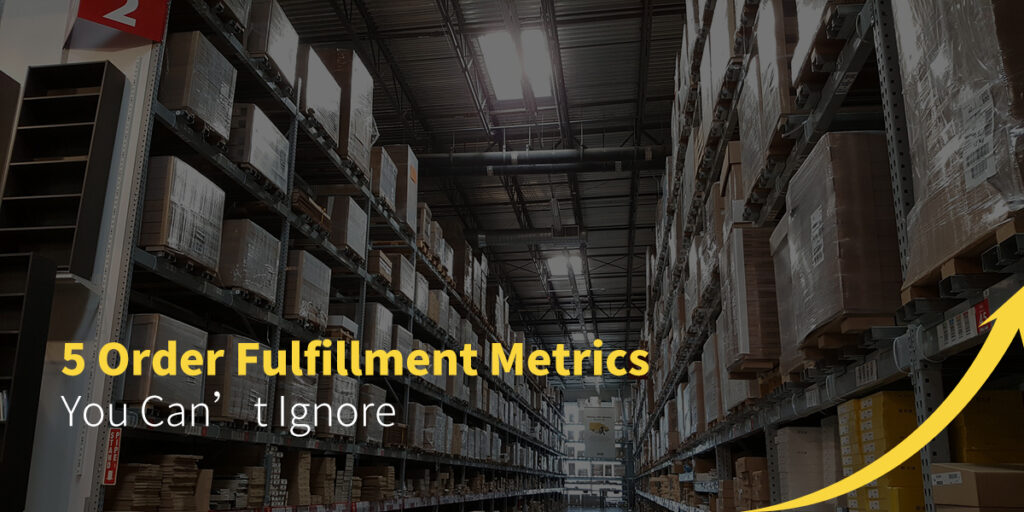World-class order fulfillment performance is one of the critical parts of e-commerce, especially for cross-boader e-business. Make a clear mind of order fulfillment metrics to assess productivity and efficiency that could improve order fulfillment performance. In a study released by Warehousing Education and Research Council (WERC) in 2019, it shows that quality and capacity instead of employees are prioritized in order fulfillment. Here are 5 metrics in order fulfillment to measure the order fulfillment performance.
Table of Contents
- Order receiving & processing speed.
- Inventory accuracy
- On-time shipment
- Order accuracy
- Rate of return

Order receiving & processing speed.
The faster you process, the more orders are picked, packed and shipped every day. Warehouses do not follow the rules of “the larger, the better”. A good warehouse stresses its importance on its capacity and efficiency. Low values for this metric may suggest that the capacity of warehouses is not enough for the demand. You can employ one labor to do the repeated picking, packing and shipping manually with 2-3 SKUs and less than 500 orders per day. When having various SKUs to handle, especially in peak season, the manual system doesn’t work.
Inventory accuracy
Similar to order processing, if you only have one hot-sale SKU, whenever your consumer places an order, you would know where to pick your goods from your shelves based on your memory. Comparatively, it takes your time in an unorganized inventory system over 10,000 orders per day. Recorded inventory should 100% reflect the physical inventory. The intelligent system allows you to track your items in a short time even you forget the locations of your goods.
There is one negligence most sellers would make, that is, when you are ready to ship the items but it turns out that the inventory is exhausted. Imagine that your products are flying off shelves, you might disappoint people and drive your consumers to your rivals. While replenishing your stock in an expedited speed, immediately inform your customers when the order is available again and tell them in advance with e-mail, phones, message to console the irritating customers.
On-time shipment
On-time shipment is to measure whether your clients would receive orders on your promised day. Now, 2-day shipping is becoming a norm for e-commerce retailers. The sooner the shipment is, the better. On-time shipment steadily builds up reliability and reputation between you and your customer. Consumers would share feedback on social media and among their families and friends. In the long run, your clients will work with you as genuine companions. Otherwise, late delivery would lead to the loss of the relationship. Miss cut-off times for carrier pickups can add another day for shipping. Goods shipped from the manufacturers would accelerate the shipping time. So, it’s crucial to have warehouses near the manufacturers.
Order accuracy
Order accuracy is the ratio of the total number of accurately fulfilled orders over the total orders shipped. The fewer errors you confound, the better. Your customers would be irritated if they wait for several days but to receive the wrong products. Many careless operations would contribute to the inaccuracies, such as picking the wrong products.
If, order accuracy:
Less than 95%: There is major room for improvement.
Between 95% and 98%: You are doing good than your most competitors but will yield less in terms of benefits.
But until you hit 99.9999%, there is an opportunity to increase profitability.
Rate of return
The rate of return is calculated on the total number of returned orders divided by the total number of fulfilled orders. Commonly, some of your consumers would mark a return of the products. But to maintain the rate of return as low as possible is your goal. The less return rate indicates that more consumers are satisfied with your order fulfillment services, including your products, shipping, etc. Gaining insights on the reason why customer make the return contribute to lower the rate of return. If the rate of return is higher than 30%, all of your efforts will likely be in vain.
Conclusion:
Discern the metrics of order fulfillment and continue to improve it to gear up your business. Managing the order fulfillment alone is a great task. Outsourcing an order fulfillment company could free you from the complicated and sophisticated in inventory management, warehouse management, shipping management and provide a better service to your customers.
